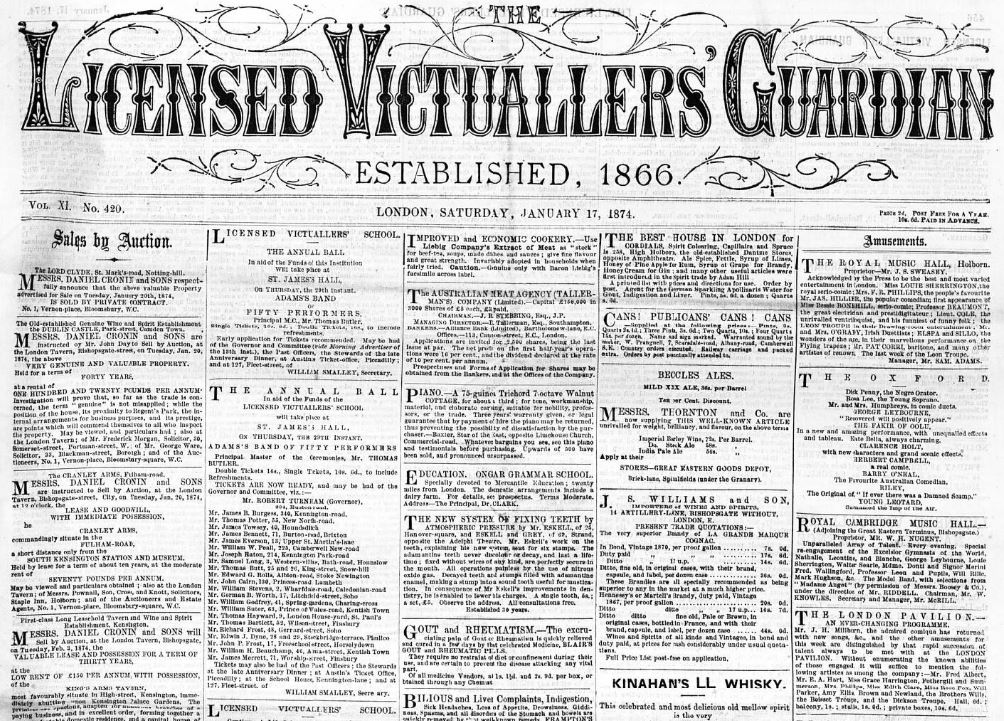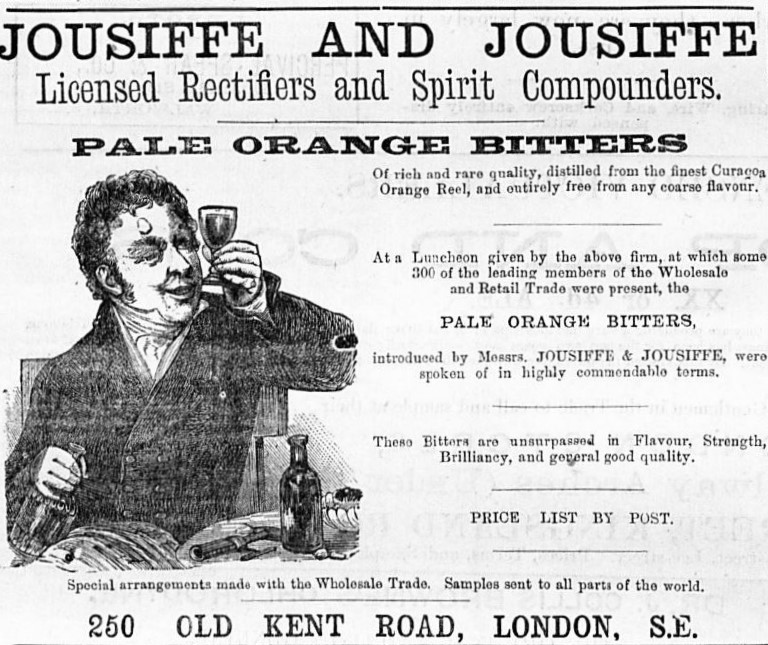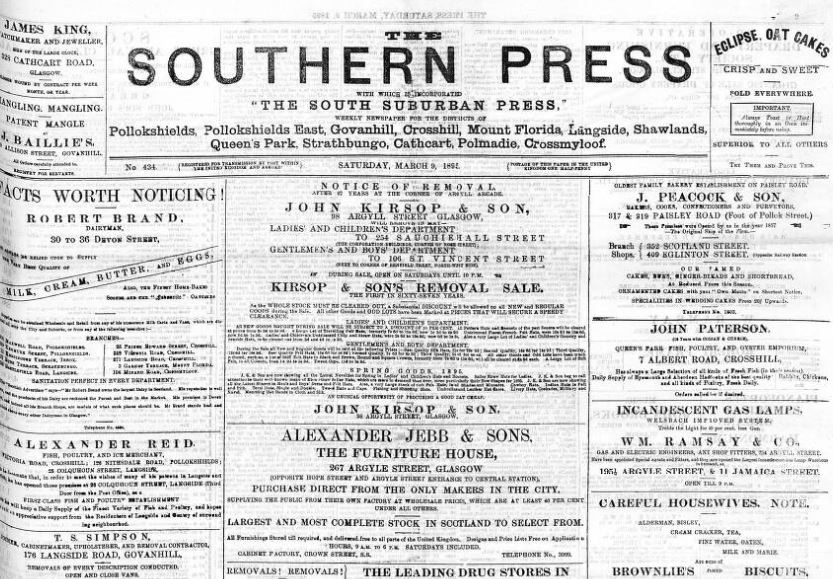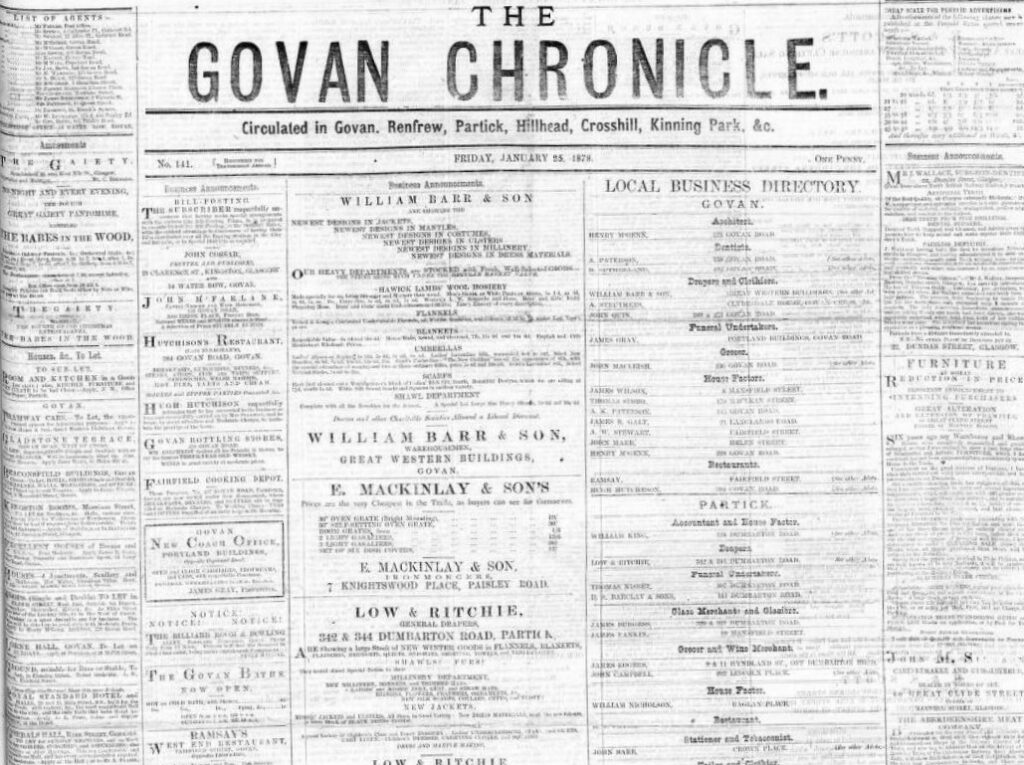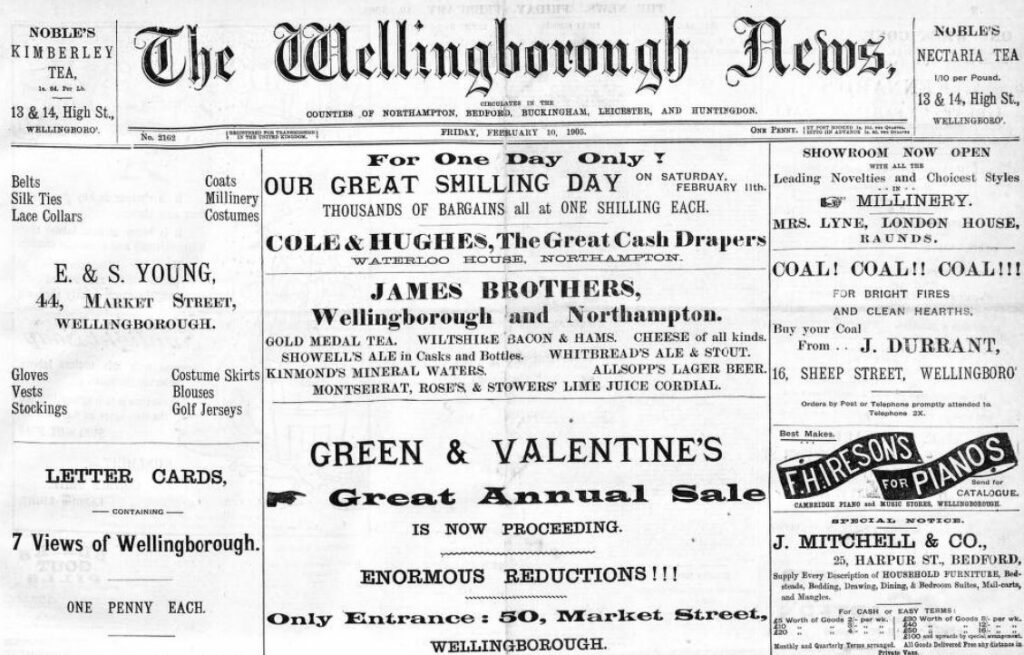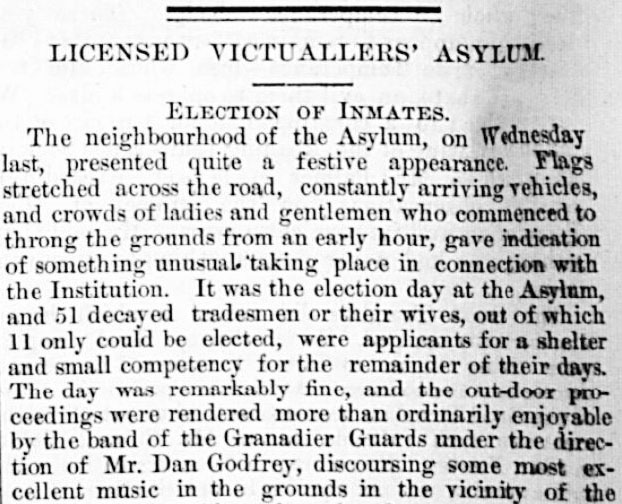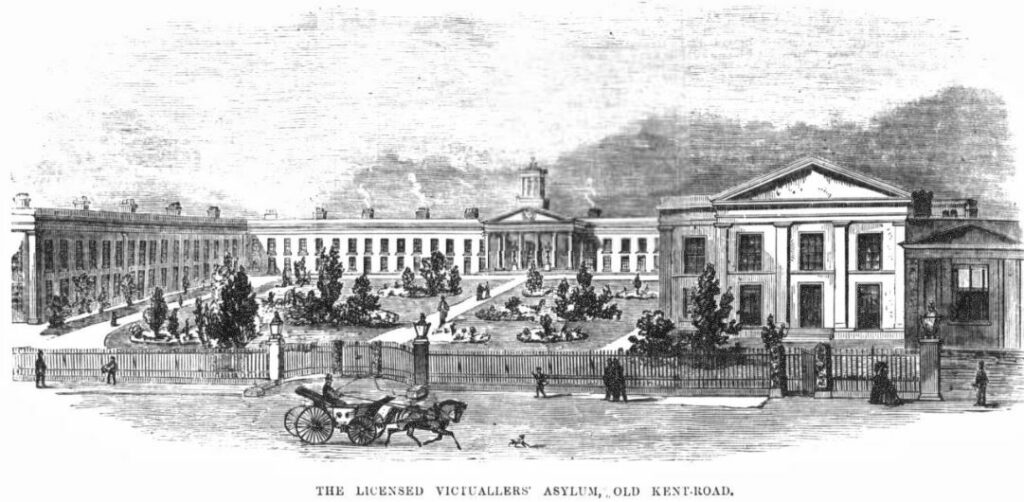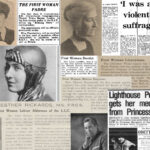This week at The Archive we’re delving into occupation history with the addition of two special employment related titles, the Licensed Victuallers’ Guardian and the Situation and London Advertiser. We’ve also added three brand new Scottish titles to our collection over the past seven days, alongside new publications from Cheshire and Northamptonshire.
So read on to learn how aging licensed victuallers were chosen to be admitted to the Licensed Victuallers’ Asylum at the Old Kent Road, a building which consisted of many almshouses.
Register now and explore the Archive
The first of our new titles this week is the Licensed Victuallers’ Guardian. Established in 1866, this title claimed to be ‘the only authorised weekly organ of the trade,’ being the ‘official medium of communication for the various Licensed Victuallers’ Societies throughout the country, and is the property of the Licensed Victuallers’ National Defence League.’
A licensed victualler is somebody who has a license to provide alcoholic beverages. Historically, they would operate either an inn, which would have a license to serve food and all kinds of drink, a tavern, which could serve food, ale, beer and wine, or an alehouse, a license for which did not include spirits. In 1830, beer houses were also included, again, this did not include a license to sell spirits. Public houses and off-licenses have been added in more recent times.
So when the Licensed Victuallers’ Guardian came into being in 1866, its main aims were as follows, as its eighth anniversary edition later recalled in January 1874:
To collect from every accessible source, and from sources which are not accessible to other journals, information of any and every kind which may be of interest to the great Trade the Guardian aspires to represent. To discuss, week by week, all questions which arise affecting the Trade, explaining and defending the views which they hold, and manfully doing battle with the host of enemies, mistaken or malicious, by whom the Licensed Victuallers of these kingdoms are so frequently annoyed.
Indeed, one of the main aims of the Licensed Victuallers’ Guardian was to guard or defend its trade, a description of the title published in 1888 reading:
The Licensed Victuallers’ Guardian is the property of the Licensed Victuallers’ National Defence League. For the last twenty years the Guardian has used its influence and efforts in forwarding the interests of Licensed Victuallers. It has a large guaranteed circulation in all parts of Great Britain and Ireland, and, from the fact of it being the property of the Licensed Victuallers themselves, and its profits devoted to Trades Defence, Advertisers may rest assured that they will be well supported by the large and influential body of Shareholders to whom the Paper belongs.
Published every Saturday in London, the Licensed Victuallers’ Guardian cost two pence, and filled eight pages. With a guaranteed weekly circulation of 48,000 by the late 1880s, the title contained descriptions of various Licensed Victuallers’ meetings across the country, with trade related articles printed across its pages, like this one entitled ‘Reasons for Public-Houses Keeping Open Till One A.M.’
Moreover, the Licensed Victuallers’ Guardian was filled with illustrated advertisements pertaining to different beers and the necessities of the trade. It also listed those within the profession who had passed away. Finally, the publication looked beyond its trade to contain a detailed look at ‘the Music and the Drama – from the pit,’ with descriptions of the latest productions at London theatres.
Another of our titles this week which deals with the history of occupations is the Situation and London Advertiser, a daily title that was founded in 1871. ‘The Medium for All Employers Assistants,’ the Situation and London Advertiser cost two pence, and was like the LinkedIn of its day, enabling people to find work, and employers to fill open positions.
In the words of the title itself:
The Situation and London Advertiser is issued daily, solely for the important purpose of obtaining promptly suitable assistants for employers and situations for assistants. It gathers into one focus information to find which before necessitated the examination of the various daily and weekly journals, and applications to the agencies and other channels. A provision is therefore made to remedy this waste of time, together with loss of assistants’ services and consequent injury to business.
Indeed, it went beyond simply being a method of advertisement, to be itself a kind of recruitment agency:
In addition to its public character, possessed in common with other daily issues, applications are repeated daily until suited. Employers’ applications are, on receipt, immediately made known to the disengaged assistants so as to meet business demands by promptitude, a large number of assistants being in attendance daily. Rooms are provided for private interview between Employers and Assistants: Waiting rooms for the accommodation of assistants. Assistants are engaged according to instructions sent Employers, saving their time, absence from business, and to Country firms, railway expenses. Notices are sent to assistants for special appointments at this office or any other place.
So what kind of ‘assistant’ jobs were available within the pages of the Situation and London Advertiser? Vacant situations included those for drapers, housekeepers, dressmakers, and sales positions. However, far more numerous were those advertisements for ‘situations wanted,’ which contained profiles of the drapers, clerks, auditors, dressmakers, furnishers, jewellers, salespeople, milliners, porters, commercial travellers, stationers, warehousemen, watchmen and surveyors who were in need of employment.
We move on from London now to cross the border into Scotland, and to introduce the first of our trio of new Scottish titles, which is the The Reporter (Stirling). Published in the city of Stirling, The Reporter was known for having ‘the largest circulation of any newspaper published in Stirlingshire, chiefly among farmers, shop-keepers, and the artisan class generally.’
Produced every Saturday, at the cost of one pence, The Reporter filled four pages, detailing both ‘General Intelligence’ and ‘Foreign Intelligence.’ Meanwhile, it extensively covered local news, from the likes of the Kippen Parish Church Bazaar, to the Stirling County Police Court, as well as the latest from the nearby towns and villages.
The Reporter also had a particular penchant for curling, whilst also providing its readers with special interest columns on ornithology and fishing. Finally, the newspaper featured ‘Musical Gossip,’ alongside ‘Masonic’ news and notices of births, marriages and deaths.
We’re off to Scotland’s biggest city now for our next new title of the week, and we’re delighted to introduce the Southern Press (Glasgow) to our collection. Tracing its origins to the South Suburban Press, which was founded in 1887, in 1892 the title became known as the Southern Press. Politically independent, and appearing every Saturday, the Southern Press cost just one halfpenny and described itself as being the ‘weekly newspaper for the districts of Pollokshields, Pollokshields East, Govenhall, Crosshill, Mount Florida, Langside, Shawlands, Queen’s Park, Strathbungo, Cathcart, Pomladie, Crossmyloof.’
A lively, rich local newspaper, the Southern Press featured short stories and serialised fiction, as well as a special ‘Literary Column.’ It thoroughly reported on the news from the area, describing the sudden deaths and accidents that had taken place during the previous week, as well as the latest from the Queen’s Park Police Court, and the local churches. Meanwhile, the title concentrated on local matters like the condition of the area’s roads, and the status of the area’s ‘drainage schemes.’
Included within the pages of the Southern Press too were letters to the editor, and a ‘Draughts Column,’ which featured illustrated examples of the game.
Our final new Scottish title this week is the Govan Chronicle, which was established in 1875 by printer and publisher John Cossar and his wife Jane. Govan is a parish that lies in the south-west of the city of Glasgow, and the Govan Chronicle circulated in ‘Govan, Renfrew, Partick, Hillhead, Crosshill, [and] Kinning Park.’
Filling four pages, the Govan Chronicle appeared every Friday at the cost of one penny. It concentrated on local news, reporting the happenings from the Govan and Partick Police Courts, and it had a particular emphasis on Scottish customs and traditions, describing, amongst other things, ‘Highland Intoning,’ ‘and ‘Highland and Island Crofters.’ It also featured poetry, literary notices, and notices of births, marriages, and deaths.
In 1878 the Govan Chronicle was replaced by the Govan Press, which ran until 1984. The title was then relaunched some years later, in 2008.
We’re back into England now to welcome our final brand new titles of the week. The honour of being our penultimate new title this week goes to the Cheshire Daily Echo, which was established in 1883 in Stockport, a town in Greater Manchester that was historically a part of Cheshire. Dubbing itself ‘The Popular Paper,’ this title was originally known as the Stockport Echo, becoming the Cheshire Echo in 1889, the Cheshire Evening Echo in 1892, and finally settling on the Cheshire Daily Echo in 1895.
Filling four pages, the Cheshire Daily Echo cost just one halfpenny, and appeared twice a week, on Tuesdays and Saturdays, before moving to a daily publication schedule. It was known to ‘circulate largely amongst the working classes of Stockport and district,’ and was renowned ‘for the extent of its special telegrams, full reports of important meetings and events, and its interesting literary extracts.’
Indeed, the Cheshire Daily Echo was packed with local news, with headlines addressing ‘The Recent Gale,’ and the ‘Disgraceful Sequel to [a] Cheshire Funeral.’ It reported from the Cheshire Quarter Sessions, and the North Cheshire Hunt, as well as detailing the latest from Stockport and the area’s churches. Meanwhile, the title had a particular focus on sport, reporting on rugby, chess, racing and billiards. The highly informative Cheshire Daily Echo also featured ‘Farming Notes,’ international news, and notices of births, marriages and deaths.
Our final new title of the week is the Wellingborough News, a Liberal title that was established in Northamptonshire in 1861. Originally entitled the Wellingborough and Kettering News, this publication appeared every Friday at the cost of one pence, and filled eight pages.
Circulating ‘largely in Northamptonshire and neighbouring counties’ of Bedfordshire, Buckinghamshire, Leicestershire and Huntingdonshire, the Wellingborough News reported ‘fully’ on local matters. Within its pages ‘general news [was] carefully curated,’ whilst great care [was] taken to make it a good family paper.’ Indeed, the publication printed both local and national news, with a special column being devoted to gardening.
The Licensed Victuallers’ Asylum – Election of Inmates
The Licensed Victuallers’ Asylum at the Old Kent Road, London, was established in 1826 by the Society of Licensed Victuallers, itself established in 1793. The asylum’s aim was to provide relief to those poor and aged members of the licensed victualling trade, as well as to their wives and widows. The doors first opened to 43 of its almshouses in 1830, with many more almshouses being added in the following years, with 170 almshouses being built by 1866, which could accommodate 205 residents.
But how did one enter the Licensed Victuallers’ Asylum? Interestingly enough, the process was a democratic one, as detailed the Licensed Victuallers’ Guardian on 4 April 1874. The newspaper sets the scene:
The neighbourhood of the Asylum, on Wednesday last, presented quite a festive appearance. Flags stretched across the road, constantly arriving vehicles, and crowds of ladies and gentlemen who commenced to throng the grounds from an early hour, gave an indication of something unusual taking place in connection with the Institution.
It was, of course, ‘election day,’ with ’51 decayed tradesmen or their wives,’ being ‘applicants for a shelter and a small competency for the remainder of their days.’ However, there were only eleven spaces available at the Licensed Victuallers’ Asylum. As well as accommodation, the successful applicants would also receive a weekly allowance for their upkeep.
Election day dawned ‘remarkably fine,’ so records the Licensed Victuallers’ Guardian, with a band from the Grenadier Guards, under direction of Mr. Dan Godfrey, providing entertainment. There was also a ‘supply of cakes’ on offer from Messrs. Drew and Meredith, which went down very well with the children that were in attendance.
The main business of the day took place at 4pm, when ‘the result of the Ballot was made known to a crowded and eager audience in the General Board-room by Mr. Annett, the Secretary.’ The results, voted for by members of the Society of Licensed Victuallers, were as follows:
- Jaggers, Elizabeth … 23,215
- Read, Charles Frederick and Mary … 21,196
- Tappin, Frances Anna. .. 21,182
- Millbourn, Henry … 19,344
- Kirkpatrick, Rebecca Susannah … 18,405
- Allen, Margaret … 17,074
- Kerrison, John Edmund and Mary … 17,012
- Loving, Edward … 16,892
- Flandell, Thomas and Elizabeth …16,747
- Golder, William James and Elizabeth … 16,450
- Fleck, Charlotte … 16,010
Narrowly missing out on a place at the asylum was William Ovenden, who received 15,045 votes.
The results announced, the Licensed Victuallers’ Guardian concluded:
Altogether the day was one that will be long remembered in the history of the Asylum, the attendance being very large, and the whole proceedings of a very satisfactory character. A goodly list of subscriptions was obtained.
Indeed, it is fascinating to learn about the selection of inhabitants for the asylum, it is like some kind of reality show voting all the way back in the nineteenth century. Learn more about the Licensed Victuallers’ Asylum, and licensed victuallers themselves, in the pages of our newspapers.
You can learn more about each of the titles we add to every week by clicking on their names. On each paper’s title page, you can read a FREE sample issue, learn more about our current holdings, and our plans for digitisation.
You can keep up to date with all the latest additions by visiting the recently added page. You can even look ahead to see what we’re going to add tomorrow.


